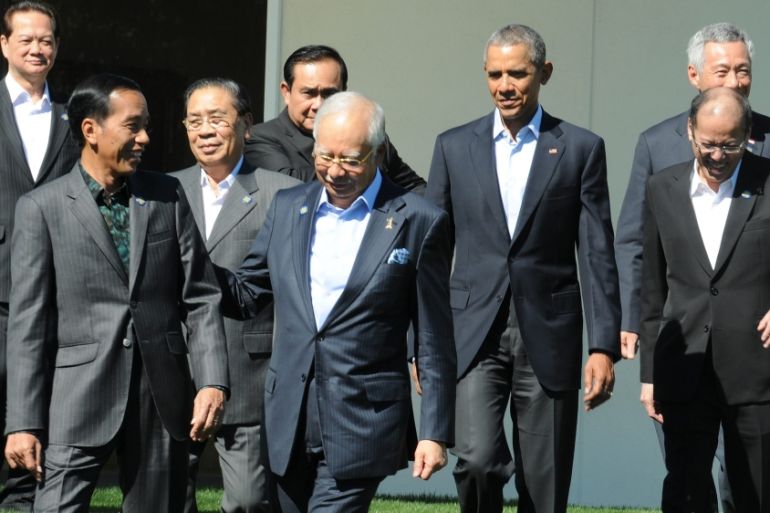Questioning Obama’s ASEAN rebalancing act
Meeting of leaders ended with stronger-than-expected statement, but how much of an effect will the summit have?

It was supposed to highlight the United States’ so-called “rebalance” to Asia. It was the first time a US president would be hosting a summit with ASEAN – the bloc of 10 Southeast Asian countries that Barack Obama sees as the “cornerstone” of US engagement with the Asia Pacific.
As National Security Adviser Susan Rice said, the US is solidifying ties with Asia Pacific as it becomes the “world’s political and economic centre of gravity”.
Keep reading
list of 4 itemsVladimir Putin sworn in for fifth term as Russian president
What’s at stake in Chad’s presidential election?
Why South Africa’s opposition may struggle to unseat the ruling ANC
US officials repeatedly stressed how historic this summit would be.

But from the get-go, the spotlight was not exactly where President Obama may have wanted it.
With election campaigns for Obama’s successor under way, there were fewer US journalists than expected at the summit.
As such, the Obama administration’s rhetoric about how important the Asia-Pacific region is fell mostly on an audience of visitors from across the Pacific…which some will argue were the intended recipients of that message.
China concerns
A number of US allies have, after all, been a tad worried that the US would not be able to sustain its commitment to the diverse ASEAN region, what with everything else it had going on both domestically and internationally.
The Philippines, particularly, is counting on US support to help to strengthen its military amid tensions with neighbouring China.
China, a growing power player with an arsenal of cash and weapons, is ASEAN’s largest trading partner but it’s also embroiled in territorial disputes with four ASEAN nations over portions of the South China Sea.
And to strengthen its claim, China has constructed islands in disputed waters.
Meanwhile, despite all attempts by claimant members such as the Philippines, ASEAN has failed to issue a collective statement on maritime concerns. Each ASEAN country has its own, separate relationship with China and the US, and they don’t necessarily concur. A sticking point in the consensus-driven body.
Regardless of internal divisions, Obama stressed that this summit was about ASEAN as a whole and not individual nations.
Human rights
He said this again as he was criticised for including ASEAN leaders with poor human rights records who might not otherwise have been invited to the US.
Leaders such as Cambodia’s long-ruling Hun Sen, and Thailand’s military coup-leader, now Prime Minister, Prayuth Chan-ocha.
By the end of the summit in Sunnylands, there was a joint declaration.
Strong words on freedom of navigation and commerce (seen as aimed at China), and even a mention of the importance of good governance and human rights (seen as aimed at some ASEAN members themselves).
This was more than some of the ASEAN watchers were expecting.
![Filipinos protest against China's deployment of a surface-to-air missile system in the disputed South China Sea [EPA/Francis Malasig]](/wp-content/uploads/2016/02/716570d13dc34e15aeeb4bf1f861b754_18.jpeg)
At the close, Obama faced a room full of journalists to speak about the summit’s success. As soon as the floor was opened to questions, the self-styled “first American Pacific president” only called on US reporters (by name).
All of them only asked about US politics and US involvement in the Middle East. Each question was answered at length. The relaxed leader was at his casual best.
But it left many visiting journalists at a loss. Were they not going to be able to ask their own questions to do with the actual just-concluded summit for which they came?
Was the conversation, at the very least, not going to be re-directed to the region that was meant to be highlighted? And they thought this was their chance to ask Obama himself for answers.
They were wrong. At the end of the day, even the news lines to come out of Sunnylands had little to do with Asia.
But within hours, the spotlight was again redirected: reports came out that China had set up missiles on one of the disputed islands.
It wasn’t exactly the way US officials wanted the world to refocus its attention.